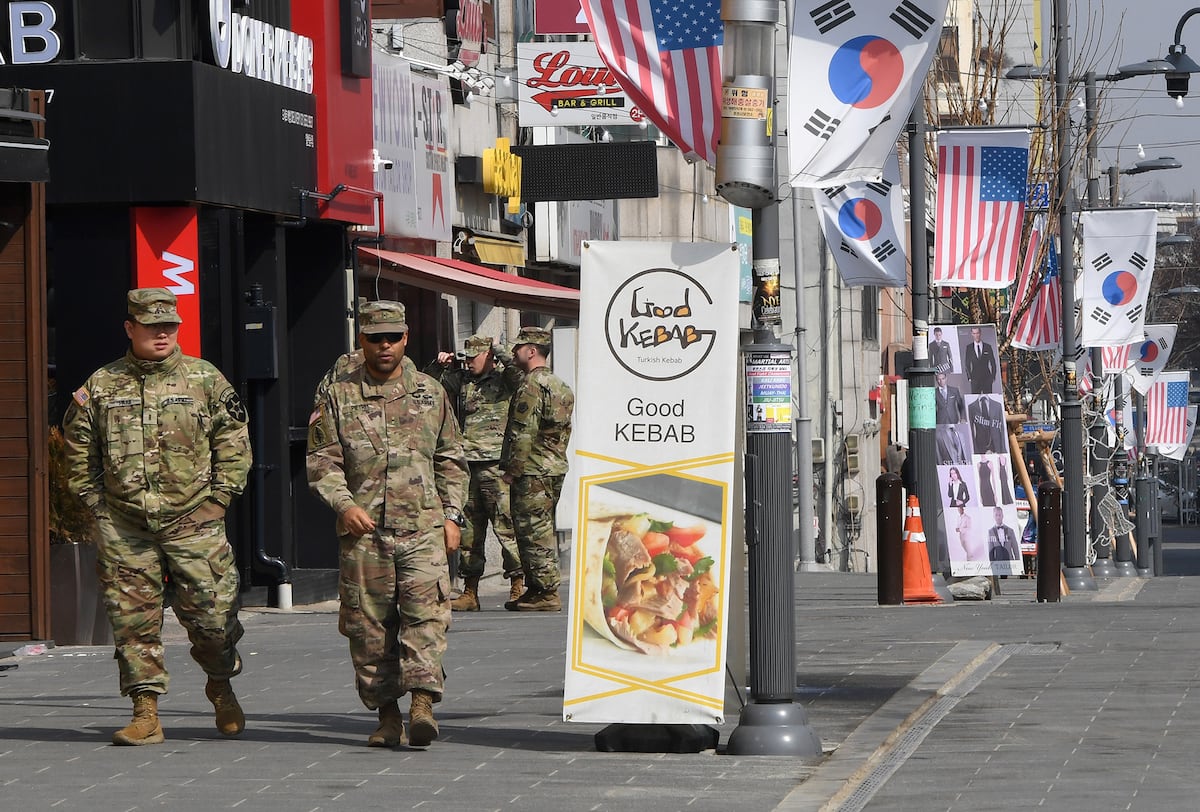The Eighth Army in Korea is already accepting soldier transfers under a new “tour normalization” system that began Oct. 1. But not every installation in the country is ready yet to accept soldiers and their families for longer tours.
Speaking to reporters at the Association of the United States Army’s annual meeting on Monday, Maj. Gen. Hank Taylor, Eighth Army commander, said the unit had embarked on a phased implementation model, with the southern installations, including Camp Humphreys, adopting tour normalization before the northern ones.
Called 3-2-1, the newly implemented tour normalization model will see soldiers accompanied by their families serving a three-year tour in Korea and unaccompanied troops serving two years. One-year tours will be reserved for those granted an exception to policy, due to housing, medical, education or other needs, Army officials have said.
This will add a year to the previous standard of a two-year tour length for accompanied soldiers — a move that officials have said will add stability as the services aim to build military capabilities in the region.
“When you think about where I manage Korea, from all the way in the south to all the way to the [Demilitarized Zone], right to the [Joint Security Area], we did a lot of good preparation,” Taylor said. “We thought, as we put that request in, we have an implementation model … we’re focused right now on where we have an immediate capability to do that, which is our southern area, in our Seoul area and Camp Humphreys.”
It will take up to four years, Taylor said, for the smaller installations and outposts in the north to be ready to receive families.
“It’s really ensuring that we have all the resources available,” he said. “So as we tell families, we’re going to bring it, we know you’re here – we’ve got schools, we’ve got hospitals, we have that care.”
RELATED
Air Force Col. William Parker, U.S. Forces Korea’s director of personnel, previously told Stars and Stripes that certain bases, like the Marine Corps’ Camp Mukuk and Kunsan Air Base, would remain closed to service members with families for the foreseeable future as the military builds up infrastructure and support systems.
“We’ve all been in turnover, you know, and when you leave, there’s always gaps, and so we’re really taking a lot of those gaps away,” Taylor said. “And then just think, people are becoming more knowledgeable about the mission and their equipment that they have. So that’s what we’re really trying to do, is increase readiness by reducing that instability.”
The Army re-established its 528th Military Intelligence Company in August in an effort to adapt to an “ever-changing battlefield,” officials said at the time. Taylor didn’t directly address questions about emerging challenges soldiers in South Korea were facing from threats, including increasingly capable North Korean rocket artillery.
“We continue to modernize in all those capabilities, and then it is truly having leaders that are trained, understanding the threat, having the early warning, and all those things,” Taylor said. “That’s how you protect yourself in those types of environments, is understanding and having the resources available to execute the mission.”
Read the full article here








